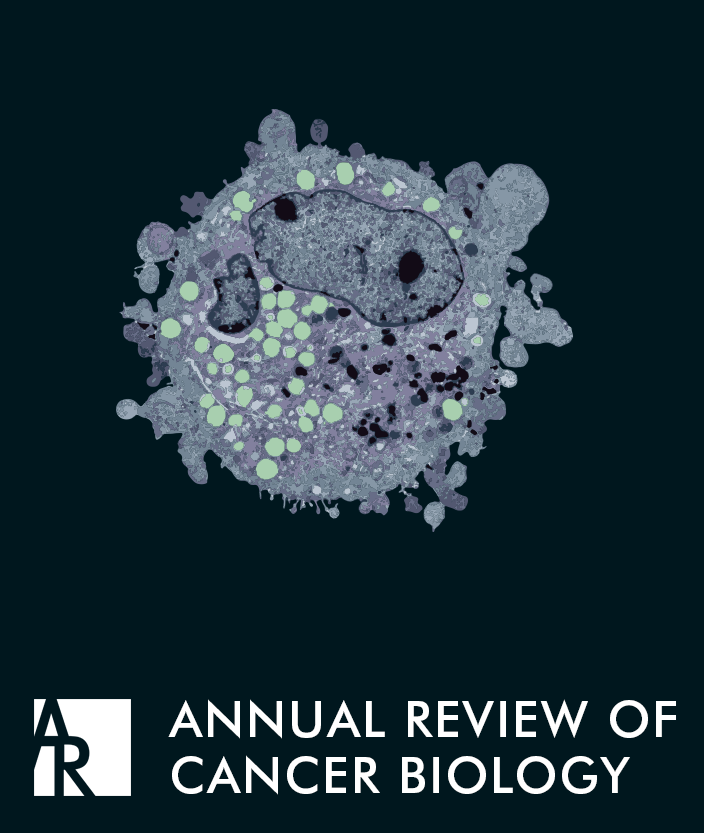KEAP1/NRF2通路在癌症中的多效性作用
IF 6.1
2区 医学
Q1 ONCOLOGY
Annual Review of Cancer Biology-Series
Pub Date : 2020-03-09
DOI:10.1146/annurev-cancerbio-030518-055627
引用次数: 41
摘要
许多肿瘤不受调节的增殖能力依赖于失调的营养利用和ROS(活性氧)信号传导来维持紊乱的代谢状态。尽管很明显,癌症广泛依赖于这些生存和信号通路,但它们如何实现这些目标却大相径庭。KEAP1/NRF2途径的突变代表了癌症对利用涉及营养代谢和ROS调节的天然细胞保护途径的有效适应。尽管激活了这些有利的过程,但KEAP1/NRF2内的突变并不是普遍选择用于跨癌症,而是似乎与特定的肿瘤驱动突变和起源组织相互作用。在这里,我们强调了KEAP1/NRF2信号轴与肿瘤生物学之间的关系,重点关注基因突变、代谢、免疫调节以及治疗意义和机会。了解KEAP1和NRF2的失调不仅可以深入了解一种常见的突变肿瘤抑制途径,还可以了解决定许多癌症发展和进化的因素。本文章由计算机程序翻译,如有差异,请以英文原文为准。
The Pleiotropic Role of the KEAP1/NRF2 Pathway in Cancer
The unregulated proliferative capacity of many tumors is dependent on dysfunctional nutrient utilization and ROS (reactive oxygen species) signaling to sustain a deranged metabolic state. Although it is clear that cancers broadly rely on these survival and signaling pathways, how they achieve these aims varies dramatically. Mutations in the KEAP1/NRF2 pathway represent a potent cancer adaptation to exploit native cytoprotective pathways that involve both nutrient metabolism and ROS regulation. Despite activating these advantageous processes, mutations within KEAP1/ NRF2 are not universally selected for across cancers and instead appear to interact with particular tumor driver mutations and tissues of origin. Here, we highlight the relationship between the KEAP1/NRF2 signaling axis and tumor biology with a focus on genetic mutation, metabolism, immune regulation, and treatment implications and opportunities. Understanding the dysregulation of KEAP1 and NRF2 provides not only insight into a commonly mutated tumor suppressor pathway but also a window into the factors dictating the development and evolution of many cancers.
求助全文
通过发布文献求助,成功后即可免费获取论文全文。
去求助
来源期刊

Annual Review of Cancer Biology-Series
Medicine-Oncology
CiteScore
14.50
自引率
1.30%
发文量
13
期刊介绍:
The Annual Review of Cancer Biology offers comprehensive reviews on various topics within cancer research, covering pivotal and emerging areas in the field. As our understanding of cancer's fundamental mechanisms deepens and more findings transition into targeted clinical treatments, the journal is structured around three main themes: Cancer Cell Biology, Tumorigenesis and Cancer Progression, and Translational Cancer Science. The current volume of this journal has transitioned from gated to open access through Annual Reviews' Subscribe to Open program, ensuring all articles are published under a CC BY license.
 求助内容:
求助内容: 应助结果提醒方式:
应助结果提醒方式:


